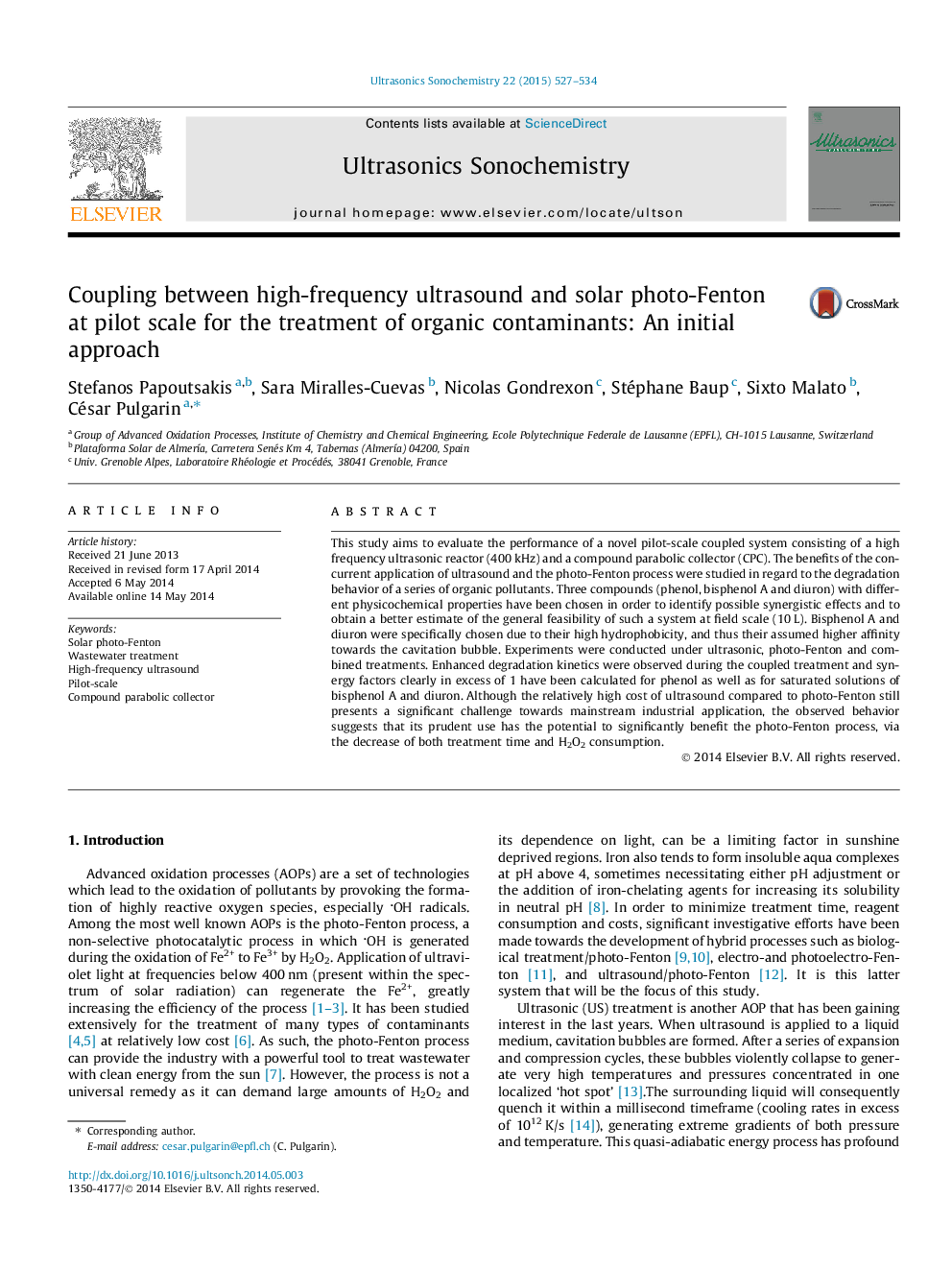| Article ID | Journal | Published Year | Pages | File Type |
|---|---|---|---|---|
| 1269677 | Ultrasonics Sonochemistry | 2015 | 8 Pages |
•Novel combination of high frequency US with solar photo-Fenton at field scale.•High levels of synergy observed between pF/US processes.•Combined process very effective for treating non-homogeneous diuron solution.•Preferential treatment of phenol at cavitation bubble interface.•Favorable H2O2 consumption rates per mg L−1 of contaminant eliminated.
This study aims to evaluate the performance of a novel pilot-scale coupled system consisting of a high frequency ultrasonic reactor (400 kHz) and a compound parabolic collector (CPC). The benefits of the concurrent application of ultrasound and the photo-Fenton process were studied in regard to the degradation behavior of a series of organic pollutants. Three compounds (phenol, bisphenol A and diuron) with different physicochemical properties have been chosen in order to identify possible synergistic effects and to obtain a better estimate of the general feasibility of such a system at field scale (10 L). Bisphenol A and diuron were specifically chosen due to their high hydrophobicity, and thus their assumed higher affinity towards the cavitation bubble. Experiments were conducted under ultrasonic, photo-Fenton and combined treatments. Enhanced degradation kinetics were observed during the coupled treatment and synergy factors clearly in excess of 1 have been calculated for phenol as well as for saturated solutions of bisphenol A and diuron. Although the relatively high cost of ultrasound compared to photo-Fenton still presents a significant challenge towards mainstream industrial application, the observed behavior suggests that its prudent use has the potential to significantly benefit the photo-Fenton process, via the decrease of both treatment time and H2O2 consumption.
